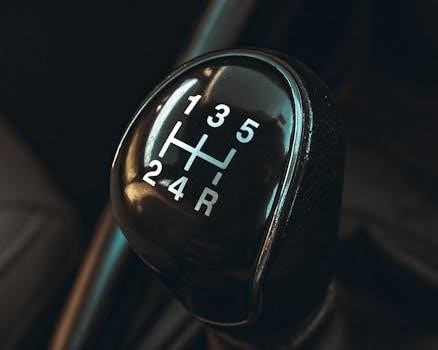TypeScript is a powerful, statically-typed superset of JavaScript, designed to enhance large-scale application development. It aims to ease development by adding features like optional static typing. It’s also often referred to as JavaScript that scales, bringing structure to dynamic JavaScript projects.
What is TypeScript?
TypeScript is essentially JavaScript with added features, most notably its optional static typing system. It’s not a completely new programming language, but rather a superset of JavaScript, meaning that any valid JavaScript code is also valid TypeScript code. This allows developers to gradually integrate TypeScript into existing JavaScript projects, making the transition smoother. TypeScript’s primary goal is to enhance the development experience, especially for large and complex projects, by catching errors early in the development cycle through static type checking. It provides developers with additional tools for code organization and maintainability, improving the overall quality of JavaScript applications. TypeScript is also known for its enhanced tooling, providing features like autocompletion and refactoring capabilities that improve developer productivity. The addition of classes, interfaces, and modules further enhances TypeScript’s ability to build scalable applications.
TypeScript as a Superset of JavaScript
TypeScript’s core nature as a superset of JavaScript means that it encompasses all of JavaScript’s functionality and adds additional features on top. Every piece of valid JavaScript is also valid TypeScript, ensuring a seamless transition for developers already comfortable with JavaScript. This compatibility allows teams to introduce TypeScript incrementally into their existing JavaScript codebases. Because of this, developers can take advantage of TypeScript’s benefits without needing to rewrite their entire applications. This approach allows teams to adopt TypeScript gradually, module by module, making it easier for teams to learn and adapt to the new features and tools. Being a superset ensures that JavaScript libraries and frameworks can be used directly in TypeScript projects without any extra effort. Furthermore, TypeScript code compiles down to JavaScript code, ensuring that it remains compatible with all JavaScript environments, including browsers and Node.js.

Core Concepts of TypeScript
Key to TypeScript are static typing and its type system. These features help catch errors early in the development cycle. This leads to more robust and maintainable code.
Static Typing in TypeScript
Static typing is a fundamental concept in TypeScript, offering a significant departure from JavaScript’s dynamic nature. Unlike JavaScript, where types are checked during runtime, TypeScript enforces type checking at compile time. This means that type errors are detected before the code is executed, leading to fewer runtime bugs and a more reliable development process. By explicitly defining the types of variables, parameters, and return values, developers gain enhanced code clarity and predictability. This explicit typing aids in better code documentation, making it easier for teams to understand and maintain complex projects. Furthermore, static typing facilitates improved code refactoring, as the compiler can verify the impact of changes on type relationships. TypeScript’s static type system also provides helpful autocompletion and error reporting in code editors, significantly enhancing the developer experience and code quality. This feature significantly contributes to the scalability of JavaScript projects.
TypeScript’s Type System
TypeScript’s type system is a core aspect of its power, providing a robust way to define and enforce data structures. It includes primitive types like `number`, `string`, and `boolean`, as well as more complex types such as `arrays`, `tuples`, and `objects`. Interfaces and classes are used to define custom types, allowing developers to create reusable and structured code; The type system also incorporates features like union types, allowing a variable to hold values of different types, and type aliases, for creating more expressive type names. Additionally, TypeScript’s type inference can often automatically determine types, reducing the need for explicit annotations. The system supports generics, enabling the creation of components that work with a variety of types, without sacrificing type safety. These components are crucial for building reusable and scalable applications. This comprehensive type system is the foundation for the scalability and maintainability that TypeScript offers.

Practical Applications of TypeScript
TypeScript is versatile, used in various environments, from client-side web development with frameworks like React and Angular, to server-side applications using Node.js. It can also be used to write declaration files.
Using TypeScript in Various Environments
TypeScript’s adaptability shines through its seamless integration across diverse development environments. It is commonly used in front-end development, enhancing frameworks like React, Angular, and Vue.js with its static typing and object-oriented features; This allows for robust, maintainable user interfaces. Furthermore, TypeScript has made significant inroads into the back-end, powering Node.js applications where its type system helps prevent runtime errors and enables more predictable code behavior. Its compilation process allows it to run smoothly in environments that do not natively support TypeScript. This makes it a practical choice for both server-side logic and full-stack solutions. Finally, it is also used in mobile development when paired with frameworks like React Native. The ability to generate declaration files helps in describing existing JavaScript libraries, thus allowing better interoperability. It’s a technology that can be utilized across the entire spectrum of development.
Writing Declaration Files for JavaScript
Declaration files, often with a `.d.ts` extension, are crucial in TypeScript’s ecosystem. They describe the shape of existing JavaScript code, enabling TypeScript to understand and provide type checking for JavaScript libraries and modules. Without these files, TypeScript would be unable to enforce type safety when interacting with JavaScript components. This is particularly important when working with third-party libraries. Writing declaration files can sometimes be a necessary step when creating a new TypeScript project that incorporates JavaScript code. It is important to accurately represent the JavaScript API surface, including functions, classes, and interfaces. These files can be created manually, or more frequently, they are automatically generated. The community project DefinitelyTyped provides a vast repository of declaration files. These are essential for TypeScript to interact seamlessly with the existing JavaScript code. Proper declaration files significantly improve code maintainability.
Advanced TypeScript Topics
Delving deeper, TypeScript offers advanced features like classes, modules, and interfaces, crucial for structuring complex applications. Decorators further enhance code by adding metadata and behavior. These concepts elevate TypeScript beyond basic scripting.
Classes, Modules, and Interfaces
TypeScript’s classes provide a blueprint for creating objects, allowing for encapsulation and inheritance, key aspects of object-oriented programming. Modules in TypeScript organize code into separate files, promoting modularity and preventing naming conflicts, enhancing maintainability. Interfaces in TypeScript define contracts, specifying the structure of objects, ensuring type safety and code clarity. These interfaces detail the properties and methods an object must have, creating a clear agreement between different parts of the codebase, leading to more reliable applications. TypeScript’s classes can be further enhanced with access modifiers, controlling the visibility of their properties and methods. Together, these features allow for the creation of scalable and well-structured applications. In essence, classes, modules, and interfaces constitute the core pillars of a robust and maintainable TypeScript codebase, promoting code organization and reusability. They also enable better collaboration and reduce the risk of runtime errors by enforcing type constraints.
Working with Decorators
Decorators in TypeScript offer a powerful way to add metadata and modify the behavior of classes, methods, properties, or parameters. They use a special syntax starting with the “@” symbol followed by a function, effectively wrapping the decorated element. Decorators are essential for implementing cross-cutting concerns such as logging, validation, and dependency injection. TypeScript decorators provide a concise way to annotate code, improving readability and reducing boilerplate. They allow you to modify classes or methods at runtime, enabling flexible and reusable code. Decorators can be used to apply consistent logic across multiple parts of an application, promoting a cleaner, more maintainable codebase. By using decorators, developers can enhance the functionality of their classes and functions without directly modifying their core logic, promoting separation of concerns. They make it possible to add advanced features to existing code in a declarative manner.

TypeScript Tools and Resources
The TypeScript Handbook serves as a comprehensive guide for programmers to understand the language. There are also numerous starter projects available, from Angular to React or Node.js, and CLIs.
The TypeScript Handbook
The TypeScript Handbook is an essential resource, designed as a comprehensive guide that meticulously explains TypeScript to developers of all levels. It’s structured to provide a thorough understanding of the language, from basic concepts to advanced techniques. You can navigate through the handbook systematically, following the left-hand navigation, to build a strong foundation in TypeScript. Each chapter is crafted to ensure that readers grasp the specific concepts it covers, offering a deep dive into various aspects of TypeScript. This handbook is regularly updated to reflect the latest features and best practices, making it an indispensable tool for anyone working with TypeScript. It’s a must-read for both newcomers and experienced developers looking to enhance their skills. The handbook is a central part of the documentation, ensuring you have a reliable path to learning TypeScript effectively.
TypeScript Starter Projects
Embarking on a new TypeScript project can be streamlined with the aid of starter projects, which offer pre-configured setups for various environments. These projects provide a solid foundation, whether you’re aiming for an Angular, React, Node.js, or CLI application. They eliminate the hassle of initial setup, allowing developers to focus directly on coding. Starter projects often include essential configurations, build tools, and basic project structures, accelerating the development process. Finding the right starter project can save time and effort, enabling you to jumpstart your TypeScript journey. These resources are readily available, catering to diverse project needs and preferences. Using a starter project is an efficient approach to beginning any TypeScript endeavor, ensuring a smoother development experience and a quicker path to success.

TypeScript and JavaScript
TypeScript and JavaScript have a close relationship, with TypeScript being a superset of JavaScript. This means that all JavaScript code is valid TypeScript code, and TypeScript extends JavaScript, adding new features and capabilities.
TypeScript’s Relationship with JavaScript Modules
TypeScript works seamlessly with JavaScript modules, understanding and enhancing their structure. It fully supports both ES modules and CommonJS modules, allowing developers to organize their code effectively. TypeScript’s type system can be applied to module imports and exports, providing static analysis and preventing runtime errors. When you import a JavaScript module into a TypeScript file, TypeScript attempts to understand the structure and types of the exported values. This is often achieved through declaration files, which provide the type information for the imported modules. This approach allows TypeScript to enforce type safety even when working with existing JavaScript codebases. This relationship ensures that you can gradually adopt TypeScript in an existing JavaScript project. By understanding how TypeScript handles JavaScript modules, developers can create more maintainable and robust applications;



































